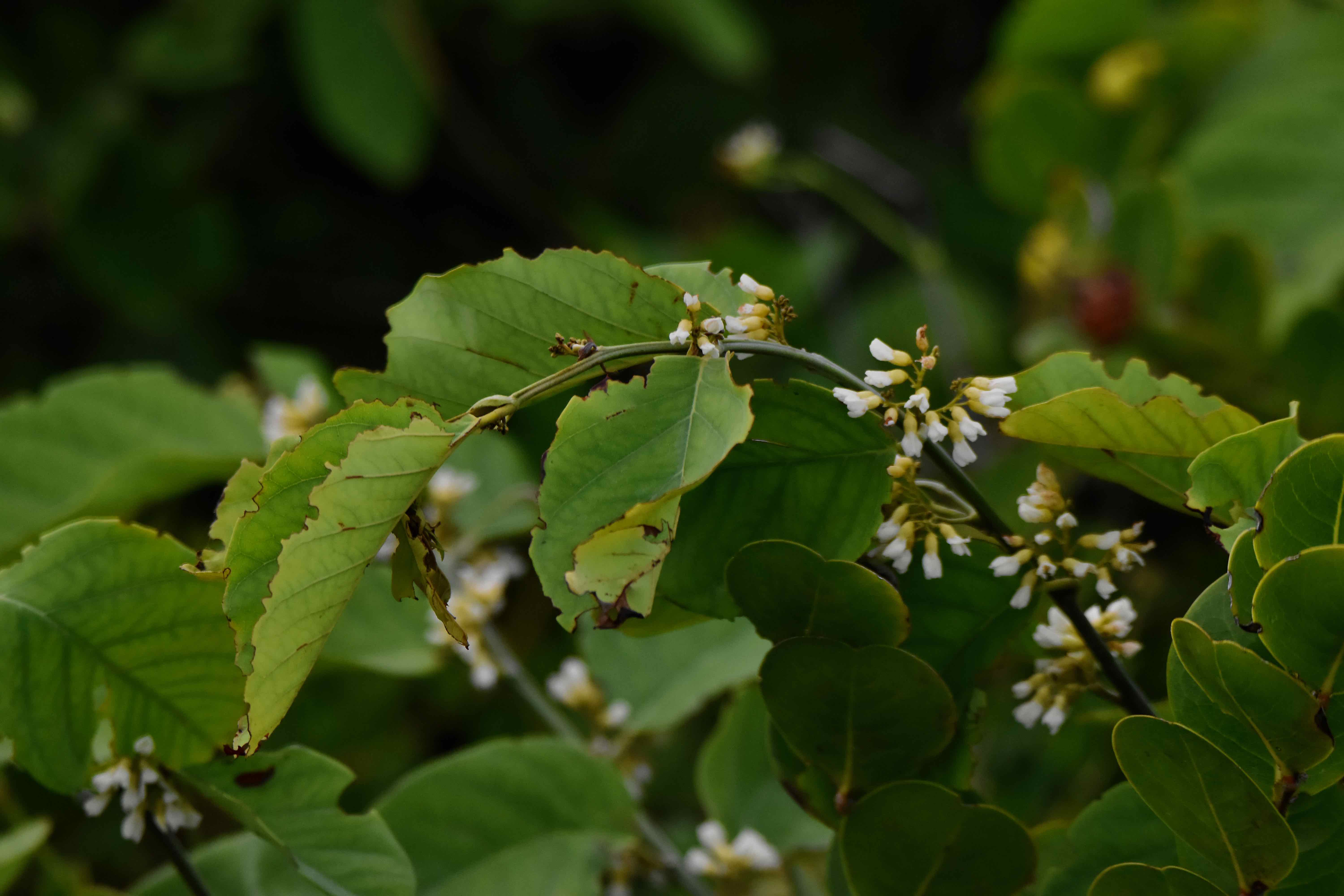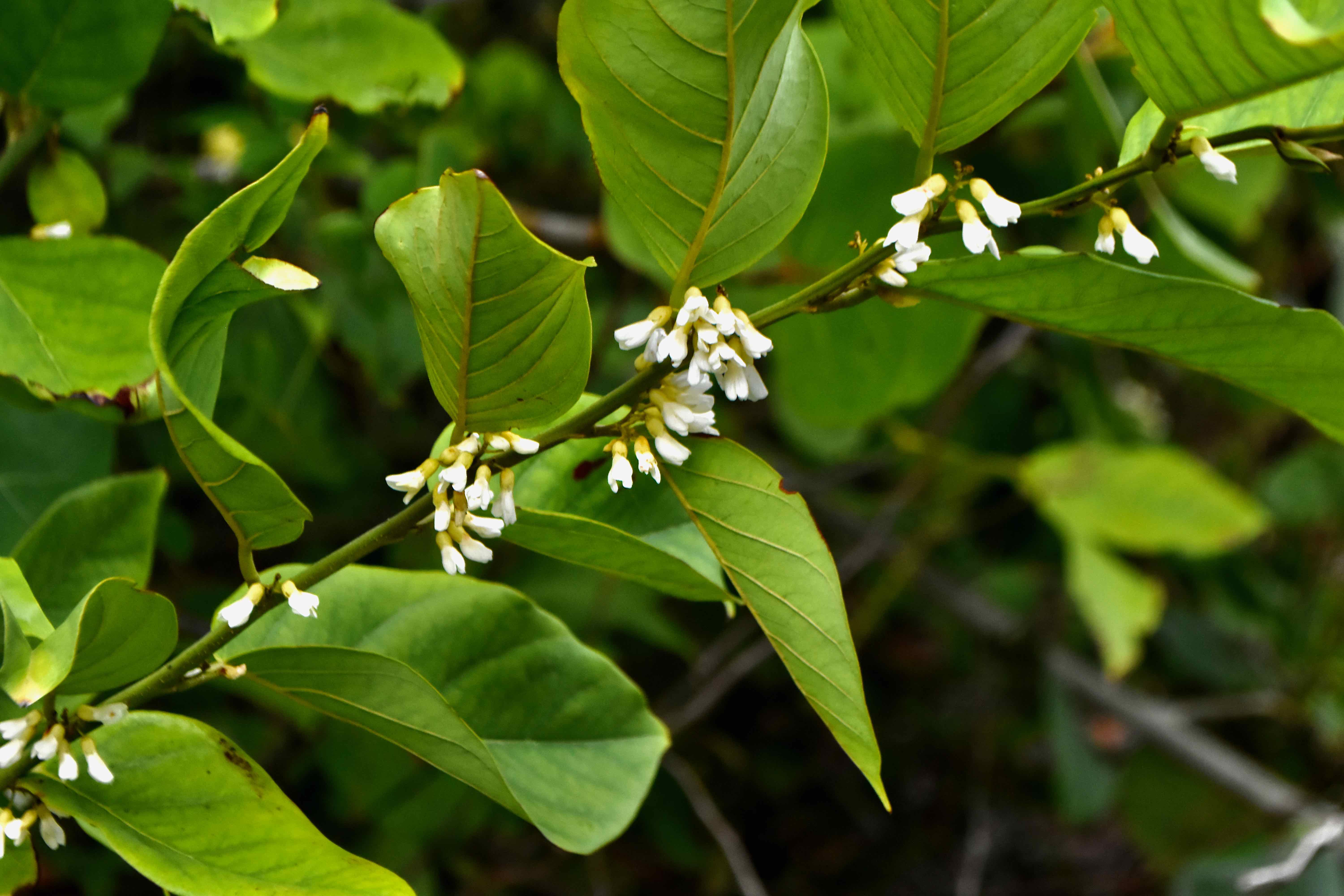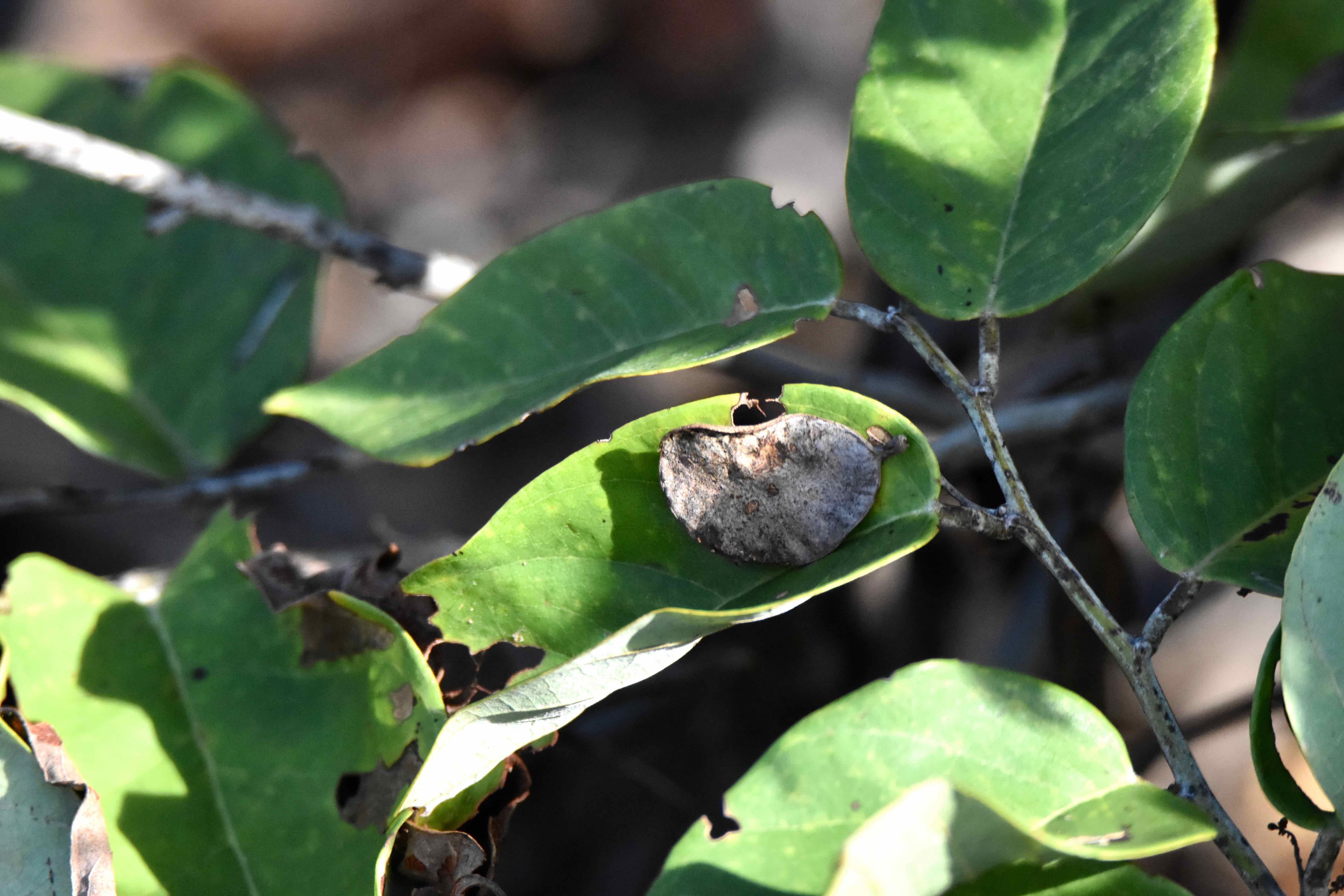
Coinvine, photographed at Atlantic Dunes Park, Delray Beach, Palm Beach County, in May 2016.
Coinvine, Dalbergia ecastaphyllum, might be the botanical equivalent of too much of a good thing. It's largely a coastal plant that helps stabilize the inland sections of beach dunes. Which, in a part of the world routinely hit by hurricanes and tropical storms, would seem to be a good thing. Can't have too much erosion protection along our waterways, right? But it's not quite that simple.
Coinvine is a Florida native commonly found in coastal areas from Brevard County, south through the Keys, to Pinellas County on the Gulf side of the state. Some argue that it has become too common because of human intervention that has altered the makeup of coastal strand ecosystems and diminished biodiversity as a result. More in a bit.
Coinvine's native range extends through the Bahamas, parts of the Caribbean, Mexico, Central America, South America and across the Atlantic to West Africa. It's found in coastal dunes and hammocks, along the landward side of mangrove swamps, rivers and streams.
First thing to know about coinvine is the name. It puts out flat, somewhat rounded seeds that turn from green to a coppery brown and are about the size of a penny. Thus coinvine. It is a rapid grower that will clamber onto its neighbors, potentially growing to 30 feet or more in length and sending out numerous lateral branches along the way. It can also be a shrub.
The leaves are large, simple, leathery in texture and arranged alternately along the branch. The flowers bloom mainly in spring and summer; they're small and white, but appear in clusters amplifying their visual effect. The clusters grow at the leaf axil, the angle at the point where a leaf meets a branch. Ultimately, the flowers give way to the namesake seeds. Coinvine is salt tolerant, which you would expect, given where it grows.
Coinvine is a host plant for the statira sulphur butterfly, Aphrissa statira, and the gray hairstreak butterfly, Strymon melinus. Coinvine is also a source of nectar for bees. And as we said, it plays a role in stabilizing beach dunes.
Coinvine is toxic. Native Americans would crush the root and bark and use it to stun fish, then catch them. In the West African nation of Senegal, the leaves are used in a steam bath as a treament for a variety of diseases. Throughout its range, coinvine extracts are used as a diuretic (increase urine flow), as an emetic (induce vomiting) and as a vermicide (to kill worms). It is cultivated, used mostly in restorations and natural settings.
The problem with coinvine is that it is a bit too well-adapted for modern beach settings. In the era before extensive human development, coastal strands used to be scrub-like, open areas with diverse plant communities. Occasional freezes kept larger plants, like coinvine and nickerbean in check, allowing other, smaller plants to grow and establish theselves.
As cities encroached, their masses of concrete and asphalt acted as heat sinks, altering the climate enough to make freezes rarer events. With little else to restrain it, coinvine grows into dense thickets that overshadow other plant species and prevent others from taking root, resulting in less diversity and coastal strands unlike what was here originally.
The problem is that many of these other plants actually do a better job of protecting dunes against erosion than coinvine; their absense makes beaches less stable than they would be under natural conditions. The problem for us human types called taxpayers is the expense of making beach repairs everytime a storm rolls through the area or comes close enough to stir up high waves. Coinvine can be controlled manually by trimming plants and limiting seedlings, but that's an expensive operation as well.
Coinvine is also spelled coin vine and coin-vine. It is a member of Fabaceae, the pea family
Atlantic Dunes Park



